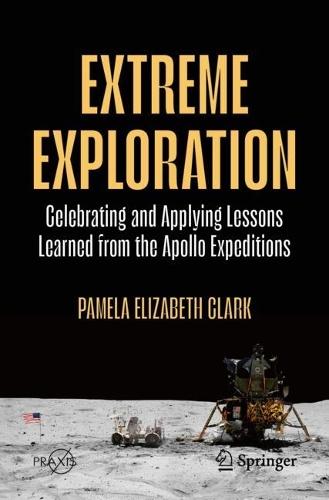Full Product Details
Author: Pamela Elizabeth Clark
Publisher: Springer Nature Switzerland AG
Imprint: Springer Nature Switzerland AG
ISBN: 9783032017338
ISBN 10: 3032017335
Pages: 289
Publication Date: 26 October 2025
Audience:
Professional and scholarly
,
College/higher education
,
Professional & Vocational
,
Postgraduate, Research & Scholarly
Format: Paperback
Publisher's Status: Active
Availability: Not yet available

This item is yet to be released. You can pre-order this item and we will dispatch it to you upon its release.
Author Information
Pamela E. Clark, PhD, grew up in New England and, inspired by President John Kennedy, decided to explore outer space. She thought, “If they can put a man on the moon, they can put a woman (me) on Mars!” She obtained her BA from St. Joseph College. There, she participated in organic geochemistry research with Dr. Mary Ellen Murphy, one of the developers of criteria for biogenicity for moon rocks, and coordinated an NSF inter–disciplinary undergraduate field research project. To obtain her PhD in planetary geochemistry (University of Maryland), she simulated, analyzed, correlated, and interpreted lunar X-ray spectra. She was a member of the group, led by Isidore Adler and Jack Trombka, that pioneered the use of orbital x-ray and gamma-ray spectrometers and participated in the USGS Astrogeology Branch Lunar Data Consortium, the first attempt to create a common format database for all the remote sensing data from a planetary body. After completing her PhD, she worked with the Goldstone Solar System Radar group, and expanded her remote sensing background to include radar, thermal and near infrared studies of planetary surfaces with particular emphasis on the study of Mercury’s surface. Dr. Clark organized a briefing team to promote a mission to Mercury, for a while edited the Mercury Messenger newsletter. Following this, she became a member of a GSFC group led by Steve Curtis that developed innovative concepts for autonomous, compact, low-cost multi-platform tools, instrument packages, and missions for extreme environments. More recently, her background and long-term interest in lunar exploration led her to support the development of science requirements, operational scenarios, and architectures for the return to the Moon as part of various lunar initiatives, which provided the basis for this book. She has also led the promotion of the cubesat paradigm for deep space exploration in the planetary science community, developing the programs for the annual Lunar Cubes Workshops first sponsored by Flexure Engineering. She led the working group and was the Science PI for the NASA NextSTEP lunar orbiter Lunar IceCube built by the Space Science Center at Morehead State University and launched by ARTEMIS 1. Dr. Clark has worked at NASA GSFC and JPL, as well as at several universities during the course of her career, and is currently the director of the Star Theater and member of the technical staff of the Space Science Center at Morehead State University. Her major goal in life is to bring scientists, engineers, technologists, and entrepreneurs together to create sustainable exploration and utilization of deep space, with the Moon as a strategic stepping stone. Springer has published her books “Dynamic Planet: Mercury in the Context of its Environment”, “Remote Sensing Tools for Exploration” (coauthored with Michael Rilee) and “Constant-Scale Natural Boundary Mapping in the Solar System and Beyond” (coauthored with Chuck Clark).



